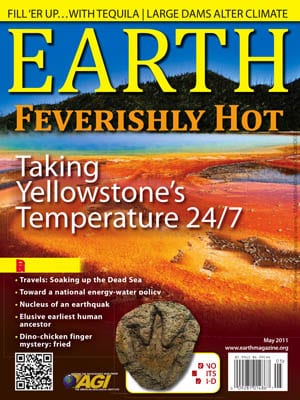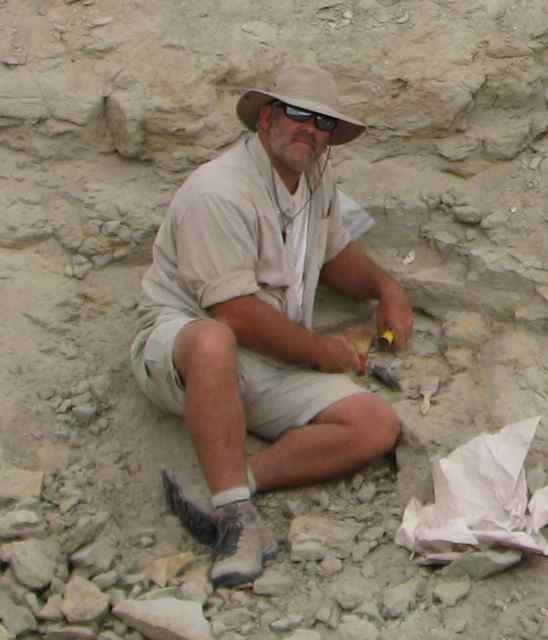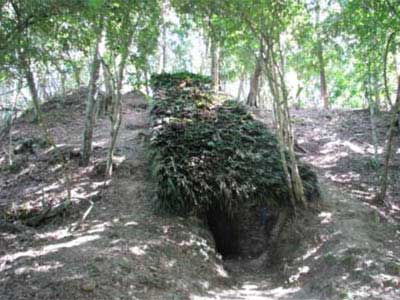
The May 2011 issue of Earth Magazine reports on the research of SMU paleontologists in the SMU Huffington Department of Earth Sciences.
In a project led by SMU paleontologist Thomas L. Adams, the scientists used portable laser scanning technology to capture field data of a huge 110 million-year-old Texas dinosaur track and then create to scale an exact 3D facsimile.
They have shared their protocol and findings with the public — as well as their downloadable 145-megabyte model — in the online scientific journal Palaeontologia Electronica.
The model duplicates an actual dinosaur footprint fossil that is slowly being destroyed by weathering because it’s on permanent outdoor display, says Adams. The researchers describe in the paper how they created the digital model and discuss the implications for digital archiving and preservation.
Scientists increasingly are using computed tomography and 3D laser scanners to produce high-quality 3D digital models, say Adams and his colleagues, including to capture high-resolution images from remote field sites. SMU’s full-resolution, three-dimensional digital model of the 24-by-16-inch Texas footprint is one of the first to archive an at-risk fossil, they say. Click here to see a large image of the Earth magazine cover.
EXCERPT:
Sam Lemonick
for Earth MagazineDinosaurs are now leaving their footprints on computers — in 3-D. Having 3-D scans of dinosaur footprints in a computer database could be the surest form of preservation of these delicate fossils, researchers say.
Dinosaur tracks found outdoors can’t always be excavated and moved indoors for preservation and study. That includes a theropod dinosaur footprint that is embedded in a bandstand made of limestone and fossil wood in Glen Rose, Texas — a town just southeast of Dinosaur Valley State Park. So a team led by Thomas Adams of Southern Methodist University in Texas decided to create a 3-D model of the print.
They used a high-resolution laser scanner the size of a small briefcase to map the shape of the footprint with beams of laser light from multiple angles. The laser scanner produces what is known as a point cloud, with each point representing a part of the object. The point cloud is then “smoothed” by software to produce a continuous surface.
 The May 2011 issue of Earth Magazine reports on the research of SMU paleontologists in the SMU Huffington Department of Earth Sciences.
The May 2011 issue of Earth Magazine reports on the research of SMU paleontologists in the SMU Huffington Department of Earth Sciences.
